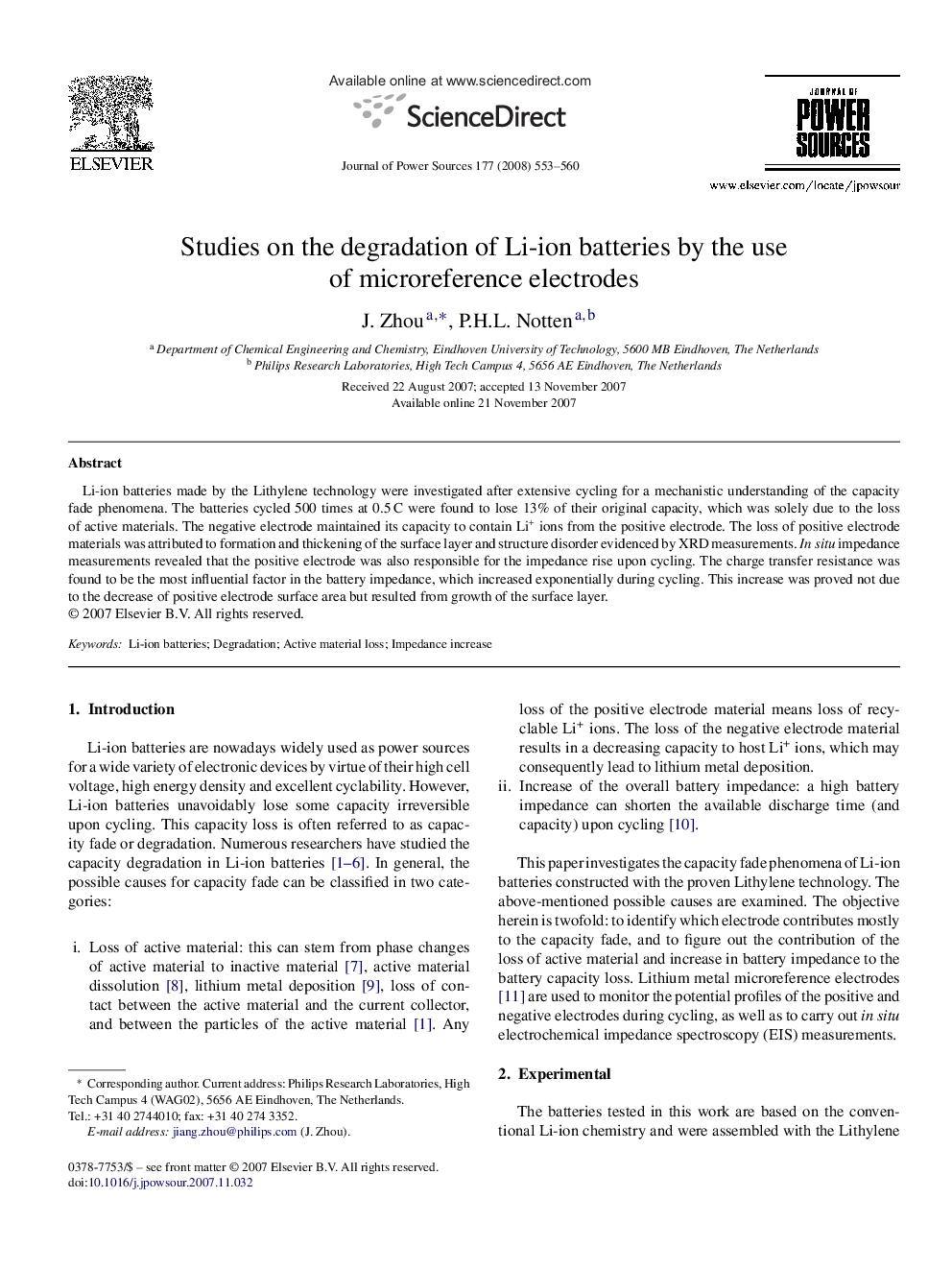| Article ID | Journal | Published Year | Pages | File Type |
|---|---|---|---|---|
| 1285606 | Journal of Power Sources | 2008 | 8 Pages |
Li-ion batteries made by the Lithylene technology were investigated after extensive cycling for a mechanistic understanding of the capacity fade phenomena. The batteries cycled 500 times at 0.5 C were found to lose 13% of their original capacity, which was solely due to the loss of active materials. The negative electrode maintained its capacity to contain Li+ ions from the positive electrode. The loss of positive electrode materials was attributed to formation and thickening of the surface layer and structure disorder evidenced by XRD measurements. In situ impedance measurements revealed that the positive electrode was also responsible for the impedance rise upon cycling. The charge transfer resistance was found to be the most influential factor in the battery impedance, which increased exponentially during cycling. This increase was proved not due to the decrease of positive electrode surface area but resulted from growth of the surface layer.
